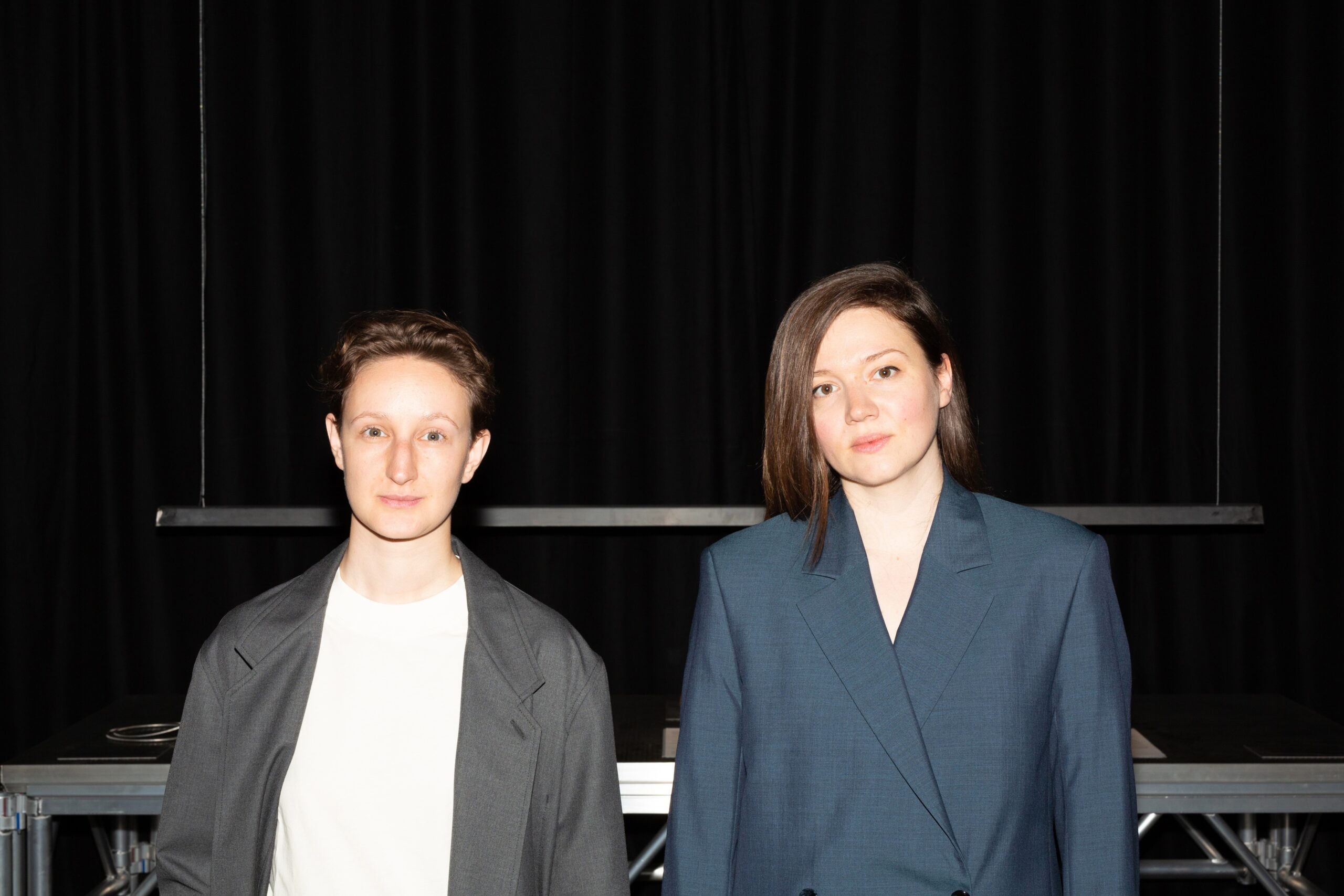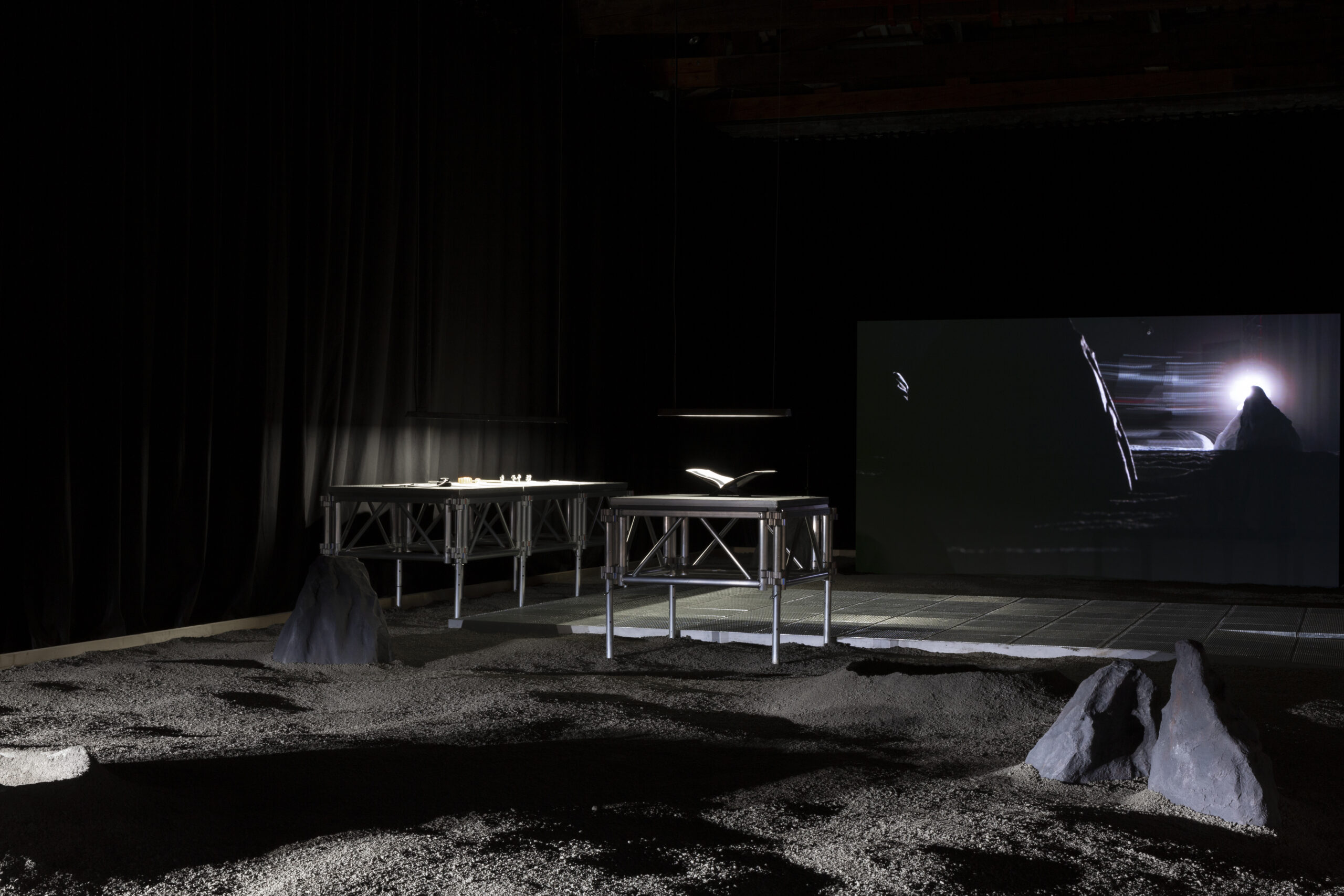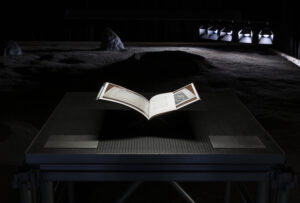Two University of Luxembourg researchers of the Master in Architecture programme and the Department of Geography and Spatial Planning, Francelle Cane and Marija Marić, were selected to represent Luxembourg at the 2023 Venice Architecture Biennale with their project titled “Down to Earth”.
The Luxembourg Pavilion opened on 18 May in Sale d’Armi, Arsenale, as a part of this year’s edition of La Biennale –The Laboratory of the Future – curated by Lesley Lokko. « Down to Earth » critically unpacks the project of space mining through the perspective of resources. Starting from the typology of lunar laboratories, the exhibition unveils the backstages of the space mining project, offering another way of seeing the Moon
How does it feel to be a part of this fantastic project? “We were incredibly honoured to be selected out of 13 teams for such an important role,” says Marija. “It is very exciting to have a chance to work on this project. Luxembourg is well known for the space mining industry. It is one of the first countries in the world that created a particular legal framework which allowed private companies and institutions to proactively engage in the development of space mining technologies. Our goal was to represent Luxembourg also as a place where the discussion around the space mining project could take place. »
The project was selected by an international jury through the open call in which architects were invited to apply with proposals to represent Luxembourg at this year’s Venice Biennale. It was supported by the Ministry of Culture and commissioned by Kultur lx – Arts Council of Luxembourg and Luca – Luxembourg Centre for Architecture.

Francelle Cane and Marija Maric © Antoine Espinasseau
Luxembourg Pavilion at the 2023 Venice Architecture Biennale brought together individuals and organisations from all over the world. “We envisioned it from the very beginning as a collaborative project,” shares Francelle. “When we applied, we already had a clear idea of the project which we wanted to submit, including the types of medium we would develop for the exhibition.”
“Space mining is not a topic that can be limited to a territory of a certain nation, it is a planetary question,” continues Marija. “We also felt the need to broaden the geographical scope of the input we had to a much larger scale. We managed to talk to different researchers and organisations from all over the world.”
“Starting our research and discussions from Luxembourg and with Luxembourgish stakeholders, including Luxembourg Space Agency, ESRIC, University of Luxembourg, and many different private companies operating here, allowed us to expand our network and eventually get in touch with international stakeholders,” adds Francelle. During the project they collaborated with the researchers from the Korea Institute of Civil Engineering and Building Technology, NASA, Italian Space Agency as well as with the space lawyers, researchers, and historians based in Luxembourg, Italy, Australia, and the UK.
“One of the most important collaborations of our project was that with Armin Linke, whom we commissioned to produce a film for the exhibition in Venice,” continues Marija. “We also collaborated with the Canadian Centre for Architecture and co-curated a workshop titled ‘How to: mind the moon with curator Lev Bratishenko. We even developed a small publication called ‘Staging the Moon, Resource Extraction Beyond Earth, published by Spector Books.” ’’
The Pavilion turned out to be impressive and was very well received by the audience but that was not the final goal of the curators. “One of the important aspects of doing such project outside of Luxembourg is to bring the discussion that opened up in Venice back to Luxembourg,” sums up Francelle. “This discussion – as the project itself – should be about reflecting together and challenging the current status quo around resource exploitation on Earth.”
“The question of resources is one of the most important questions we, as a society, have to tackle,” agrees Marija. “Our project, even in its name « Down to Earth” calls for reshuffling and reconsidering our relationships with resources that we already have here, rather looking at other celestial bodies to find solutions.”

Luxembourg Pavilion at the 2023 Venice Architecture Biennale © Antoine Espinasseau
Copyright © Antoine Espinasseau
